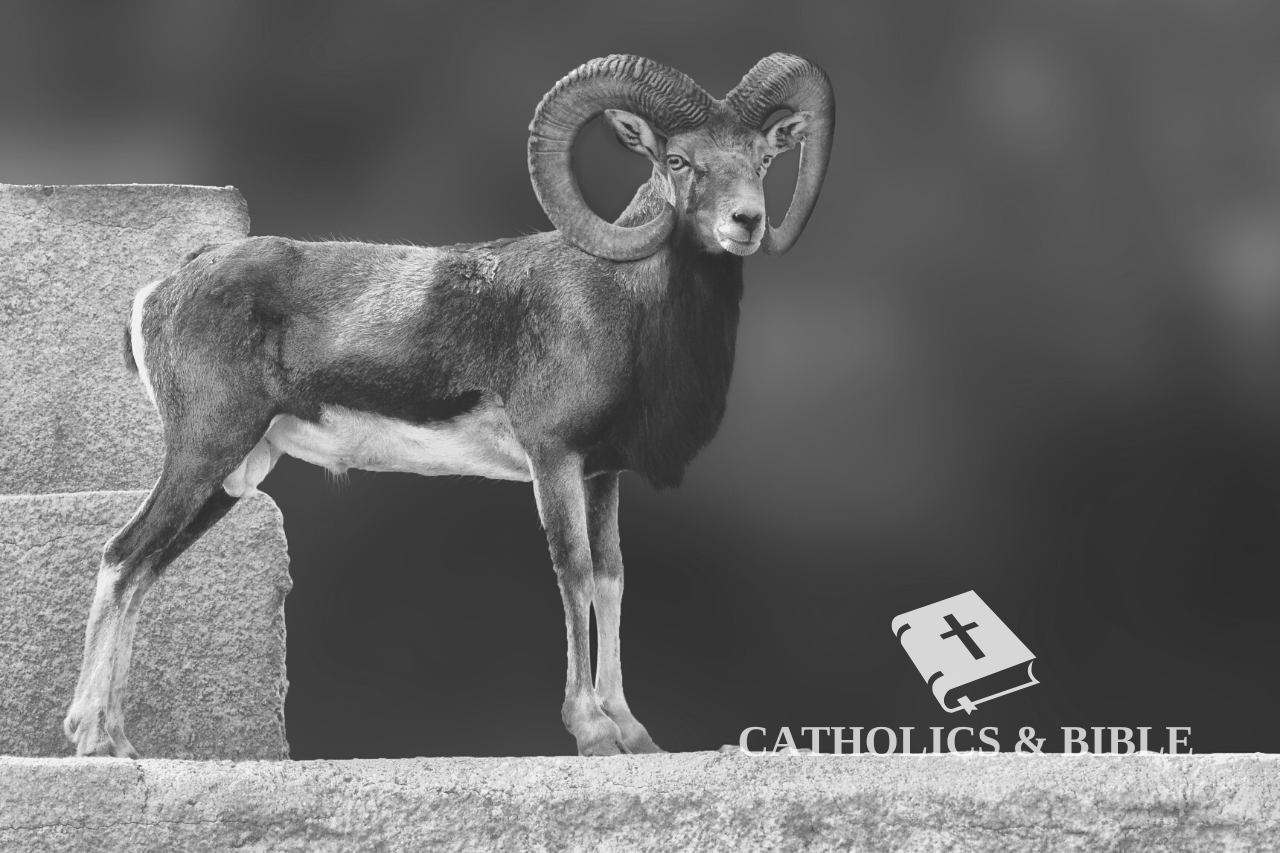A ram is a male sheep (as you probably know). Specifically, one that is not castrated. Rams were common flock animals in Ancient Israel. Along with lambs, goats and bulls, rams were often used in burnt offerings.
In this post, we discuss the symbolism of a ram in the Bible and the various contexts where the animal appears.
What You'll Learn Today
Symbolism of Rams In Sacrifices

One of the first mentions of a ram in the Bible is in the account of Abraham and his son, Isaac. When God stops Abraham from offering up his son as a sacrifice, Abraham finds a ram and sacrifices it instead.
Genesis 22:13 And Abraham lifted up his eyes, and looked, and behold behind him a ram caught in a thicket by his horns: and Abraham went and took the ram, and offered him up for a burnt offering in the stead of his son.
In later chapters, rams show up several times as one of the acceptable animals for sacrifice. Here’s an example in Leviticus 9:4.
…and an ox and a ram for peace offerings, to sacrifice before the Lord…
For this reason, a ram is a major symbol of sacrifice in the Bible. By shedding its blood, the ancient Israelites atoned for their sins, gave thanks to God and prayed for God’s blessings.
Of course, today we don’t need rams to do all these things. In the New Covenant, we can pray directly to God for forgiveness or to seek his favor. Our faith, not blood sacrifices, is what matters when it comes to our relationship with God.
Rams As A Symbol of Strength and Power

The other major mention of a ram in the Bible is in the prophetic vision of Daniel regarding the Medo-Persian empire.
Three prophets – Jeremiah, Isaiah and Daniel – in the Old Testament foretold the rise of Medes and Persia and how they would conquer Babylon.
In Daniel’s case, his prophetic vision consists of a ram that symbolizes these two Kingdoms that later unite to take down Babylon.
Daniel 8:3 I raised my eyes and saw, and behold, a ram standing on the bank of the canal. It had two horns, and both horns were high, but one was higher than the other, and the higher one came up last.
The different heights of the horns refers to the strength of one over the other. Medes rose to power first with the help of Chaldeans and the Babylonian empire.
But soon, the Persians began to gain power and later conquered Media to form the Medo-Persian empire.
The horn that rises last but higher stands for Persia.
Verse 4 continues: I saw the ram charging westward and northward and southward. No beast could stand before him, and there was no one who could rescue from his power. He did as he pleased and became great.
The ram growing stronger and fiercer represents the increasing strength of the Medes and Persians. They expand mostly west, north and south (as the prophecy predicts by omitting eastward, the Medes & Persians don’t make significant advances to the east).
But the ram is not all-powerful. Soon he meets a foe bigger and stronger than it – a male goat.
Daniel 8:5 As I was considering, behold, a male goat came from the west across the face of the whole earth…
In the vision, the goat attacks the ram, breaks its horns and tramples it on the ground. This represents the defeat of the Medo-Persian empire by Greece under Alexander the Great.
In Daniel’s vision, the ram, though great and powerful, represents short lived power. Poor leadership, mismanagement and greed eventually brought down the enormous Medo-Persian empire.
Bottom Line
Animals as a symbol of something is a common phenomena in the Bible. The dove represents the Holy Spirit. The serpent is a symbol of evil.
Rams, together with other flock animals, symbolized the sacrifices the Israelites had to make to appease God and give thanks.
They also symbolize strength and power. The Ram’s head, with its imposing horns, is specifically used to represent these concepts. In Daniel’s vision for instance, the focus is only on the horns on the Ram’s head.
In Daniel 8, it is about the end times. These kingdoms mentioned are also represented by different beasts. These come together in revelation 13, the first beast.
The kingdom which falls apart in 4 is the British empire, from which rises the little horn.